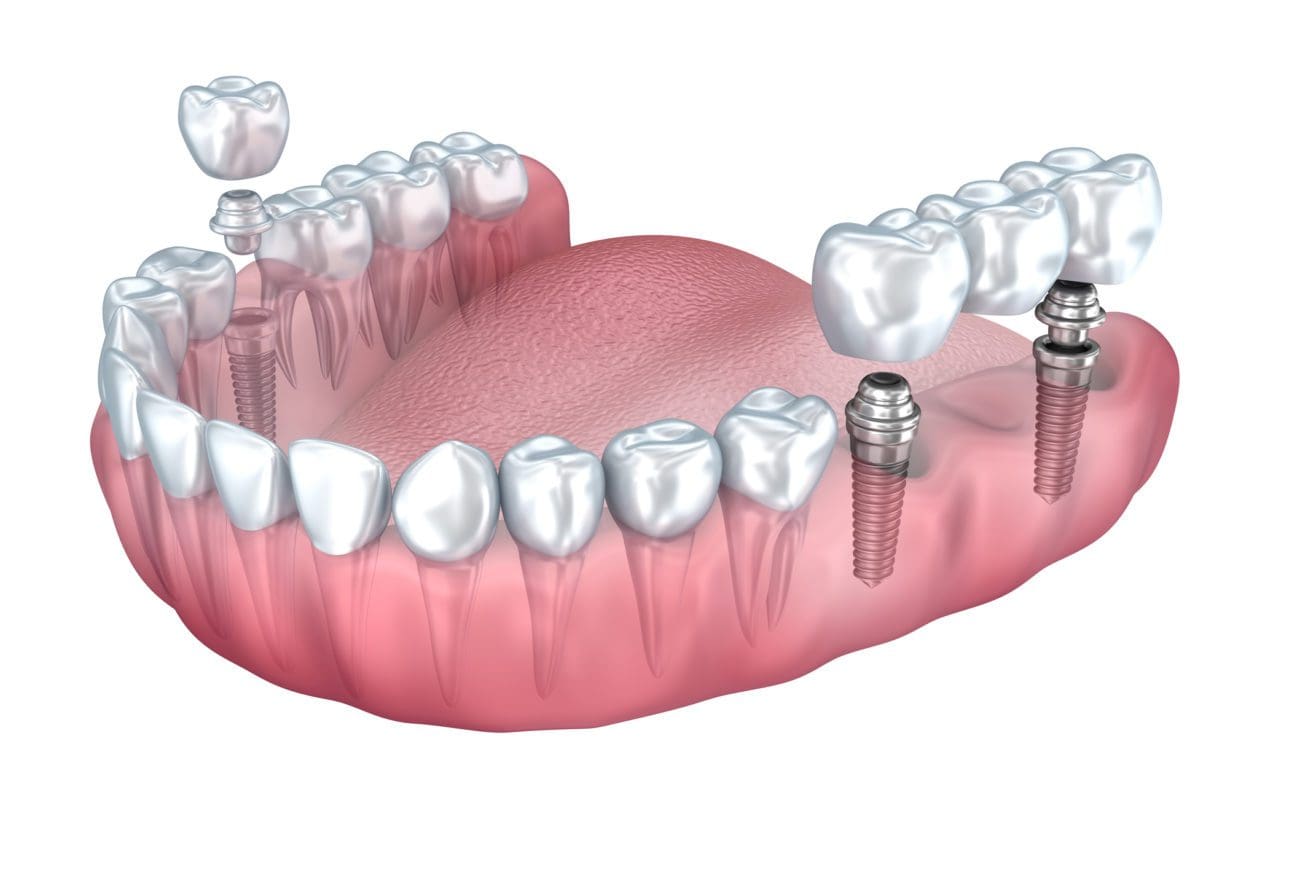The Ultimate Guide To Dental Sense
The Ultimate Guide To Dental Sense
Blog Article
The Ultimate Guide To Dental Sense
Table of ContentsThe Only Guide to Dental SenseDental Sense Can Be Fun For AnyoneExcitement About Dental SenseSome Known Details About Dental Sense
are medical devices surgically implanted into the jaw to bring back a person's ability to eat or their appearance. They provide assistance for man-made (phony) teeth, such as crowns, bridges, or dentures. When a tooth is shed because of injury or condition, an individual can experience complications such as quick bone loss, defective speech, or adjustments to eating patterns that lead to pain.Dental implant systems contain an oral implant body and oral implant abutment and might likewise include a joint addiction screw. Dental implant vs bridge. The dental implant body is operatively inserted in the jawbone instead of the tooth's root. The dental implant abutment is normally affixed to the dental implant body by the abutment addiction screw and extends through gum tissues right into the mouth to support the affixed man-made teeth
(https://www.tripadvisor.in/Profile/dentalsense1)Structure of The Dental Implant System picking oral implants, speak to your oral company concerning the prospective advantages and threats, and whether you are a candidate for the treatment. Points to think about: Your general wellness is an essential consider identifying whether you are a great prospect for dental implants, for how long it will require to heal, and how long the dental implant might stay in place.
Smoking may impact the healing procedure and decrease the lasting success of the dental implant. The healing procedure for the implant body might take a number of months or longer, throughout which time you typically have a short-lived abutment instead of the tooth. the oral implant treatment: Carefully comply with the oral hygiene directions offered to you by your oral service provider.
How Dental Sense can Save You Time, Stress, and Money.
Implant failing can cause the need for one more procedure to fix or replace the implant system. Restores the ability to eat Restores aesthetic appearance Assists keep the jawbone from reducing due to bone loss Maintains the health and wellness of the surrounding bone and gum tissues Helps keep surrounding (neighboring) teeth steady Boosts lifestyle Damage to bordering natural teeth during dental implant positioning Injury to the surrounding tissues during surgical treatment, such as sinus opening Injury during surgery (as an example, crack of surrounding jawbone) Inadequate function, such as feeling like the teeth do not attack together usually An experience that the tooth is loose or twisting in area resulting from an abutment screw loosening Implant body failing (looseness of the dental implant body) because of systemic infection, which might be a lot more most likely in individuals with uncontrolled diabetes because of local infection in bone and periodontals supporting the implant body due to delayed healing, which may be most likely in people who smoke Problem cleaning the periodontals around the implant, leading to inadequate oral hygiene Neglected periodontal illness Post-surgical tingling because of nerve impingement or damages Constantly inform health and wellness care service providers and imaging technicians that you have dental implants before any magnetic resonance imaging (MRI) or x-ray procedures.
FDA is not familiar with any kind of damaging occasions reported for MRI or x-ray procedures with oral implants. Dental implants anchor systems are commonly made of products that comply with worldwide agreement criteria of the International Company for Standardization (ISO) or ASTM International. These requirements have details of what makes a risk-free material.

An oral implant is a structure that changes a missing tooth. With screw-like gadgets, the specialist inserts an implant into the jawbone, and it functions as a support for a man-made tooth, called a crown. A tool called a joint connects the fabricated tooth to the oral implant. The crown is tailor-made to fit the person's mouth and match the shade of their teeth.
Dental Sense for Dummies
Some individuals are not qualified for oral implant surgery. It is for oral doctors to operate on people with: severe illnessuncontrollable metabolic diseasebone or soft cells illness or infectionIf these issues are solved, a person can have the surgical treatment. In, dental doctors avoid operating on people with: If individuals with any of the above undergo oral implant surgical treatment, there is a higher risk of the implant stopping working.

Dental dental implant surgery is a customized procedure. It's not the exact same for everybody. The adhering to offers a basic overview of what you can expect your dental expert, dental doctor, periodontist or prosthodontist to do: Position the dental implant surgically. Give you time to heal. Attach the blog post and final crown, bridge or denture.
Next off, your specialist will meticulously place the dental implant into your jaw. If your dental implant is near the front of your mouth, your dental professional will make a temporary tooth for you to wear until you heal.
Top Guidelines Of Dental Sense
Your company can inform you what to anticipate in your scenario. Throughout the recovery phase, your jawbone should fuse to the dental implant. This process, called osseointegration, is crucial for security and long-term success. This procedure can take anywhere from three to 9 months. Sometimes, it might take longer.
As soon as your implant heals, your dental practitioner can attach the abutment (tiny connector message) and your final repair (crown, bridge or denture). This typically takes about one hour to finish and might require a 2nd small surgical procedure. You should not really feel any discomfort during your oral implant procedure due to the fact that your copyright will make use of medication to numb your gum tissues.
Report this page